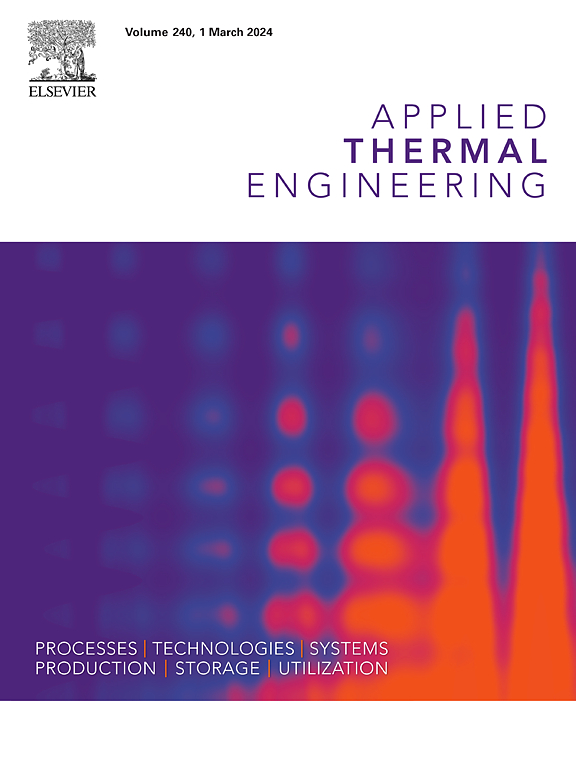Experimental study on convective heat transfer characteristics of supercritical pressure RP-3 kerosene in serpentine tubes
IF 6.1
2区 工程技术
Q2 ENERGY & FUELS
引用次数: 0
Abstract
Kerosene is used as coolant to cool airborne equipment and aero-engine, indicating the heat transfer performance of kerosene determines the security of aircraft. Serpentine tubes are widely utilized to conserve aircraft space and enhance heat transfer. In this study, RP-3 kerosene is electrically heated to the fixed outlet temperature of 800 K in horizontal serpentine tubes under supercritical pressure. The effects of the number of bending sections (2–4), mass flow rate (0.5–1.5 g/s), and system pressure (3–5 MPa) on heat transfer performance are analyzed. Results indicate that serpentine tubes significantly enhance heat transfer at a small cost of pressure drop increase, and heat transfer coefficient (HTC) increases with the number of bending sections. The average HTC increases by 56.7 % in 4-Bend serpentine tube compared with that in straight tube, but the pressure drop only increases by 135 kPa. Serpentine tubes significantly suppress the heat transfer deterioration in inlet region (260 < L/di < 600) and supercritical temperature range (700–775 K). The HTC increases as mass flow rate increases or system pressure decreases. The strong centrifugal force not only reduces the HTC differences in bending sections, but also induces a local decrease in heat transfer near the inlet of bending section. The integrated effects of drastic thermophysical property variations and centrifugal force improve heat transfer performance of RP-3 kerosene. This study reveals the action range of heat transfer enhancement of serpentine tubes, and provides necessary fundamental guidance to optimize serpentine tubes for its application in aircraft.
求助全文
约1分钟内获得全文
求助全文
来源期刊

Applied Thermal Engineering
工程技术-工程:机械
CiteScore
11.30
自引率
15.60%
发文量
1474
审稿时长
57 days
期刊介绍:
Applied Thermal Engineering disseminates novel research related to the design, development and demonstration of components, devices, equipment, technologies and systems involving thermal processes for the production, storage, utilization and conservation of energy, with a focus on engineering application.
The journal publishes high-quality and high-impact Original Research Articles, Review Articles, Short Communications and Letters to the Editor on cutting-edge innovations in research, and recent advances or issues of interest to the thermal engineering community.
 求助内容:
求助内容: 应助结果提醒方式:
应助结果提醒方式:


